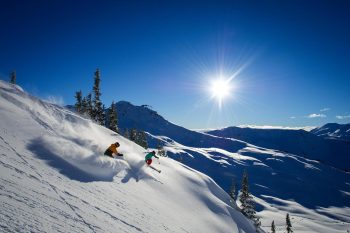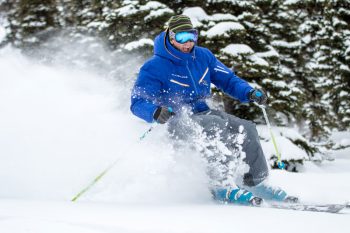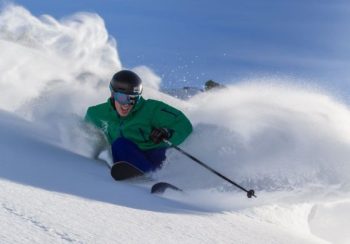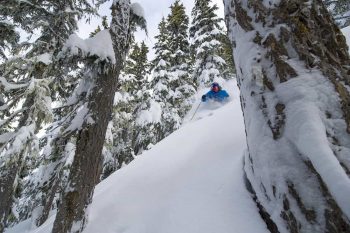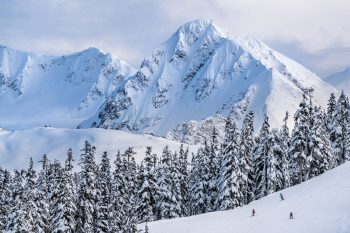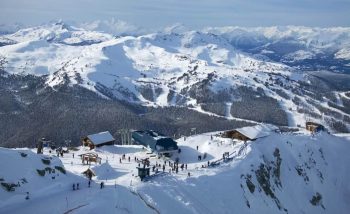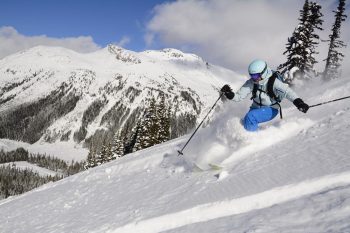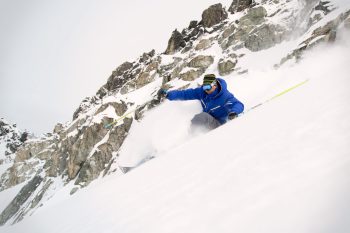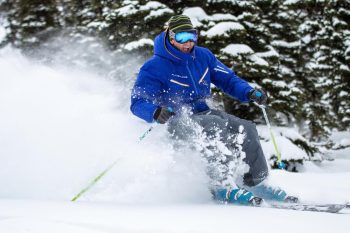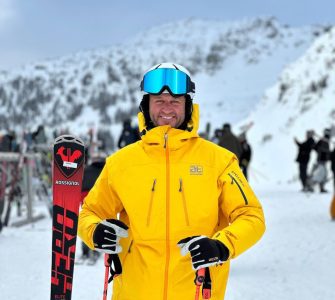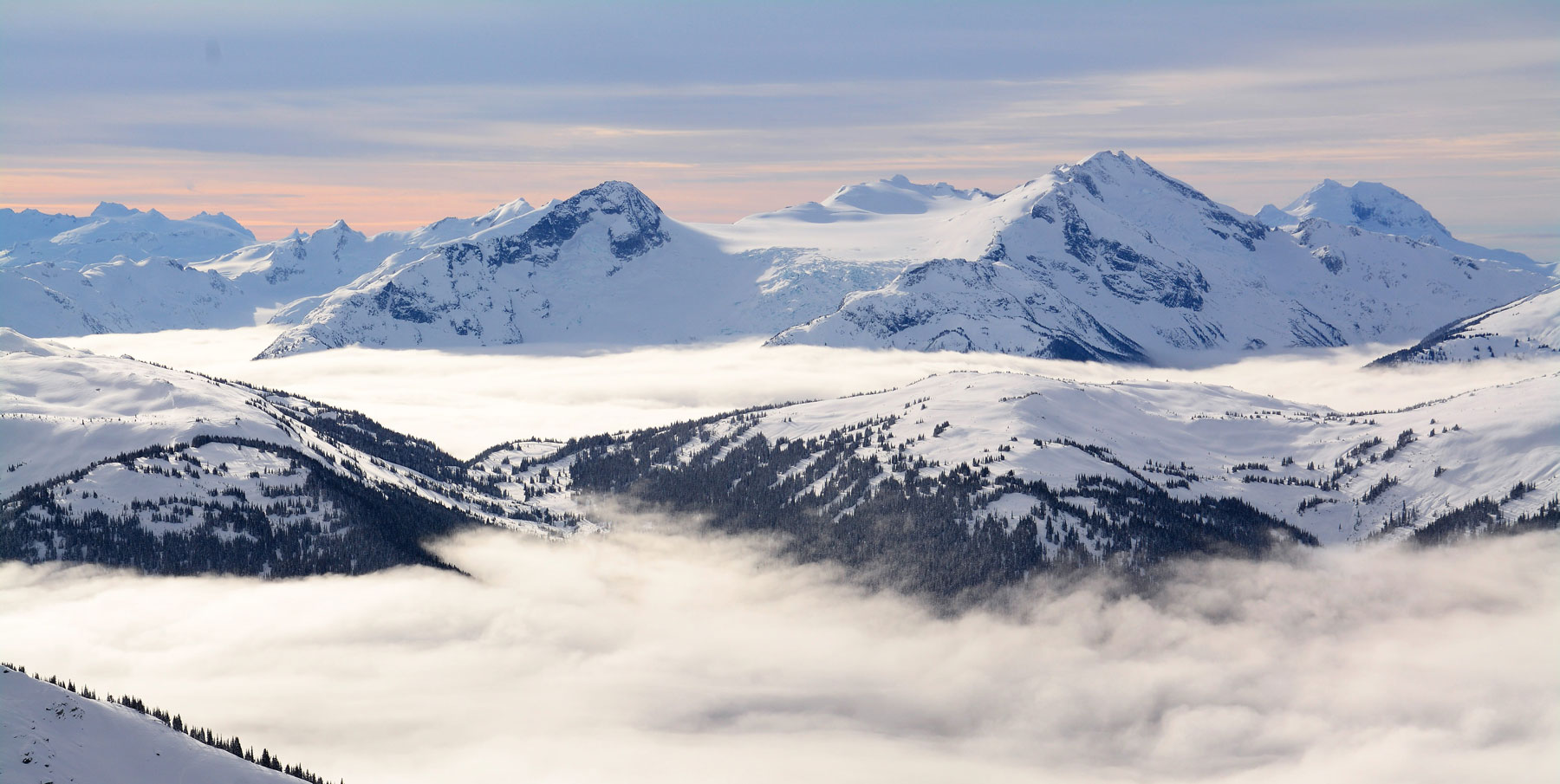Getting Air: A Beginners’ Guide to Ski and Snowboard Freestyle Tricks

Every skier or snowboarder, regardless of how experienced they are, has dreamt about the possibility of doing freestyle tricks at least once or twice.
And while things like jumps and grinds may seem impossible at first, almost anyone can learn the basics with a little hard work and repetition. Are you ready to learn?
A Primer on Ski Freestyle Tricks

I’ll start with skiing before diving into snowboarding tips in the next section. For experienced skiers looking to improve their existing skillsets and take on some more demanding challenges, there are a couple of basic manoeuvres most choose to begin with.
But before you can begin attempting these tricks, you have to be able to get some air. The two general techniques for jumping are:
Springing
Springing is usually the first technique beginners start with. It’s fairly simple to time and easy to balance. According to Mechanicsofsport.com, it happens by compressing your body downwards and then jumping upwards to create enough momentum to launch you in the air.
“To spring as we approach the jump we gradually bend our knees and hips to bring our body weight as low as possible,” they explain. Then, as you come to the lip of the jump, you create that upward momentum by coming out of your crouch and jumping upwards, so as to fully extend your body.
Once you’re in the air, you tuck your knees to your chest for aerodynamic purposes and to achieve better balance upon landing. Springing is really quite simple, but it does take some practice to perfect.
The Ollie
The Ollie is a bit more challenging, but – when perfected – it allows you to maximize air time, height, and distance. You start by leaning forward in anticipating of the jump. Next, you throw your weight backwards, letting the back of the skis bend while the front tips come off the ground.
As this happens, gently bring your weight forward again and use the spring from the skis to catapult yourself into the air. Finally, tuck your body for balance upon landing.
Once you master these two jump techniques, you’ll find learning basic maneuvers like 180’s and 360’s much easier. In reality, the jumping is the hardest part. Once you’re in the air, all you have to do is gain control over your body and use your momentum to point yourself in the direction you wish to go.
An Intro to Snowboard Freestyle Tricks

Now for some basic snowboarding tricks. After learning how to jump, which comes pretty natural to most people, you can begin to focus on cool tricks and moves. Let’s look at a handful of them:
Wheelies
Remember when you used to “pop a wheelie” on your bicycle? Well, a wheelie is pretty much the same on a snowboard. You maintain balance completely on the back of your board, while the frontend remains in the air. This is probably the easiest trick to do and will help you get more comfortable with your board.
To initiate the wheelie, crouch slightly and lean backwards. Then shift your weight to your back foot and lift your front foot up. Try to hold it as long as possible without falling.
Air to Fakie
Don’t let the name fool you, an Air to Fakie is a pretty cool trick. It involves making a 180 degree turn in the air and then riding backwards after landing. This is one of those tricks that looks more challenging than it actually is (a plus for a beginner).
Start by riding downhill at a moderate speed. Next, initiate the turn by twisting your hips and shoulders in the direction you wish to spin. As you do this, crouch down and shift your weight to your back foot (as you would when doing a wheelie). Begin lifting the nose of your board first, followed by the tail.
Once your board is off the ground, turn 180 degrees and prepare for landing. You should hit the snow with both feet at the same time, while crouching a bit to reduce the force of impact. You can the “ride fakie” after the landing.
Once you learn these basic tricks and get familiar with leaving the ground, you can begin trying more aerial tricks and ultimately transition to rails, halfpipes, and freestyle courses. At that point, you’ll be capable of trying just about anything.
Safety is Key in the Mountains

Above all else, you have to remember that safety is always the most important thing when you’re on the slopes. Never ski or snowboard alone – especially if you’re planning on experimenting with new freestyle tricks and moves. You should always have a partner with you, or at the very least, let others know about where you’ll be.
As I’ve mentioned in the past on this blog, there are a number of things to remember when it comes to safety. Start by ensuring you always follow the on-piste rules as laid out by the International Ski Federation (FIS).
This includes only overtaking people if there is enough space for movement between you and the skier in front, assisting others in the case of an accident, and never stopping on a slope unless necessary or unavoidable. Additionally, you should always wear the proper equipment and dress with enough layers to keep your core temperature regulated.
By ensuring that you’re prepared and by understanding the possible dangers associated with freestyle skiing and snowboarding, your time on the slopes will be that much more enjoyable and stress-free. After all, skiing is meant to be fun – don’t make it more than it is.
ALLTRACKS Academy and Whistler are Waiting for You

At ALLTRACKS Academy, we offer some of the top ski and snowboard courses in Whistler Blackcomb, Canada including freestyle ski courses. Furthermore, we pair that natural terrain with experienced and informative training to mould our students into skilled and qualified instructors.
For additional information regarding any of the classes or programs we offer, please don’t hesitate to contact us today. We would be thrilled to tell you more about ALLTRACKS Academy and Whistler Blackcomb.
[contact-form-7 id=”253″ title=”Contact form”]

